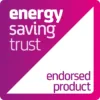Reduce NRMM & Genset Emissions with HJS Retrofits
We offer the first and only Energy Saving Trust (EST) certified retrofit exhaust systems for all power bands, helping you achieve Stage 5 compliance and reduce emissions on existing equipment.
Retrofit for NRMM Emission Zone compliance
Reduce Genset emissions & achieve Emission Zone compliance.
HJS are the first retrofit exhaust system manufacturer to secure Energy Saving Trust (EST) certification for all power bands of fixed and variable speed Non Road Mobile Machinery (NRMM) applications. This includes approval for Stage 3b and Stage 4 engines where a compliant OE DPF is already fitted, and an HJS SCR system is retrofitted to achieve Stage 5.
HJS have worked tirelessly over the last 2 years with the Swiss Association VERT and have undertaken strict in-service testing in order to gain this accreditation.
In the current climate of uncertainty where compliant machinery is not widely available, the HJS SCR/T system gives NRMM owners and operators a cost-effective and timely alternative to purchasing new Stage 5 machinery.
Contact us today to discuss retrofitting your existing equipment to gain Stage 5 compliance. This is essential for the Greater London Authority NRMM low emission zone, on key infrastructure projects, and on a growing number of key construction sites across the UK.
The Greater London Authority Low Emission Zone for Non Road Mobile Machinery
The Low Emission Zone in London applies to all Non Road Mobile Machinery (NRMM) with a net power rating of between 37kw and 560kw operating within central London. The minimum emission standards for NRMM within London are detailed below:
- NRMM used on the site of any major development, as defined in the London Plan within Greater London will be required to meet emission Stage 3A as a minimum
- NRMM used on any site within the Central Activity Zone or Canary Wharf will be required to meet emission Stage 3B as a minimum
- All eligible NRMM should meet the standards above unless it can be demonstrated that a comprehensive retrofit to meet both PM and NOx emission standards is not feasible. In this situation every effort should be made to use the least polluting equipment available including retrofitting technologies to reduce particulate matter emissions
Central Activity Zone or Canary Wharf | Greater London | |
|---|---|---|
From Sept 2020 | Stage IV or best available retrofit technology | Stage IIIB or best available retrofit technology
|
With an estimated 10,000 active construction sites in London at any one time NRMM has been identified as one of the largest contributors to poor air quality in London.
Plant hire companies machine operators and construction organisations have the following compliance options:
- Retrofit existing machines with emission abatement technologies
- Reorganise NRMM fleet to ensure compliant equipment is used
- Replace or re-engine equipment
HJS SCR/SCRT Emission Reduction Technology
The HJS SCRT system combines a diesel particulate filter to reduce particulate matter with an SCR catalyst to reduce Nitrogen Oxide. The system uses an ammonia-based fluid called AdBlue which is finely atomised and injected directly into the exhaust system at calculated intervals during operation. In the hot exhaust gas stream, the AdBlue evaporates and hydrolyses to ammonia which is mixed with the dirty gases which then pass over a catalyst. The ammonia reacts with the nitrogen oxide within the exhaust gas breaking the Nitrous Oxides down to form Nitrogen and water.
For the reduction of particulate matter, a highly efficient oxidation catalyst is located upstream of a diesel particulate filter which reduces particulate emissions by as much as 99%.
If required, an electric heater can be installed in the exhaust tract upstream of the AdBlue injection position which helps with low exhaust gas temperatures e.g. after a cold start or during operation with low load and low engine speeds in order to maintain adequate exhaust gas temperatures for high efficiency of the SCR/SCRT system.
The HJS SCR/SCRT system does not require constant maintenance during normal operation, apart from the need to refill the AdBlue which is indicated via the HJS service display.
For the majority of operators the retrofitting of existing machinery will be the quickest, most effective and most reliable way of ensuring that they comply with the conditions set within the LEZ.


